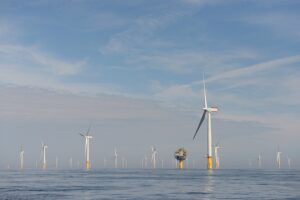A new report released by clean energy analytics firm REN21, the Renewables 2021 Global Status Report (GSR), shows that a troublesome gap exists between measured renewable energy growth and what’s required to align with ambitious climate targets in 15 G20 countries, including Australia.
The report examines all sectors, such as the electricity sector, transport, buildings and industry, to quantify the amount of renewable energy being used in each. Though technologies like wind and solar are used on electricity grids, electrification can unlock their use in sectors such as transport, where road vehicles currently use combustion engines.
Though renewable energy has grown significantly since 2009, rising demand growth has resulted in the proportion of fossil fuels being roughly the same, as measured in ‘final energy’. Much of the growth of renewables has been in displacing fossil fuels in electricity grids, but the transport, building and industry sectors remain largely fossil-fuelled due to low levels of electrification and energy efficiency.
 REN21 finds that very little is being done to increase the pressure on these systems from renewable energy. “Instead of driving transformation, recovery packages provide six times more investment to fossil fuels than to renewable energy,” they write, highlighting that much of the post-COVID19 economic recovery spending is going towards fossil fuels.
REN21 finds that very little is being done to increase the pressure on these systems from renewable energy. “Instead of driving transformation, recovery packages provide six times more investment to fossil fuels than to renewable energy,” they write, highlighting that much of the post-COVID19 economic recovery spending is going towards fossil fuels.
“Unfortunately the harsh lesson from the pandemic is that most governments did not use the unique opportunity to further curtail carbon pollution and break the resistance of the fossil fuel incumbents. What counts for them is corporate profit – neither the climate nor people’s health,” said Dr. Stephan Singer, Senior Advisor at CAN International.
The report also finds that corporate power purchase agreements, PPAs, reached record levels in 2020, with a 23.7 gigawatt increase in 2020.
Though Australia’s renewable energy industry has grown fast, particularly the rooftop solar PV industry, it remains in the middle of G20 countries and is one of 15 of the 20 without any new incentives for renewable energy growth. This means new clean energy will come online only as space is made by departing fossil fuel industries.
“For the first time, Australia produced more than 20% of its electricity generation from solar and wind power, and, for the second consecutive year, it saw records for both wind power installations and output,” said the report’s authors. “Wind power again was the largest renewable source of electricity (9.9% of the country’s electricity generation). Renewable capacity under corporate power purchase agreements also achieved a new record in 2020.”
Their report finds that Australia ranks 14th in the world for total renewable power capacity, fifth when measured per-person (excluding hydro power), and seventh in absolute solar PV capacity added in 2020 (4.1 gigawatts).











